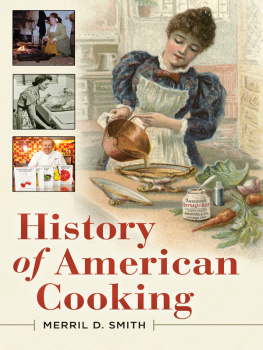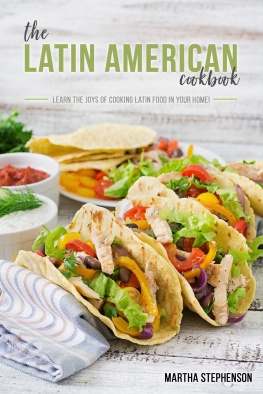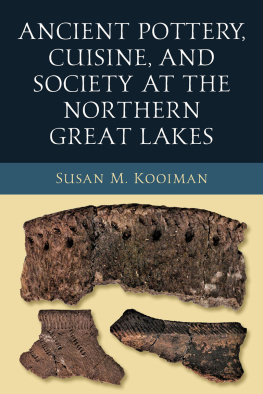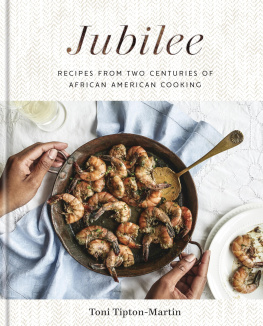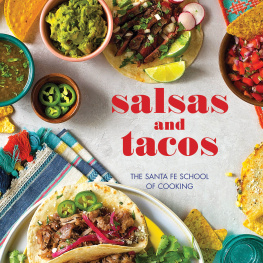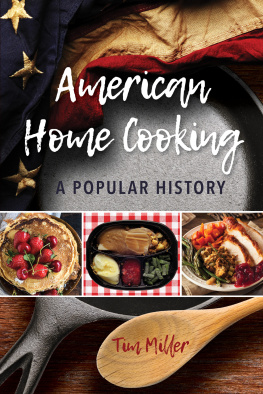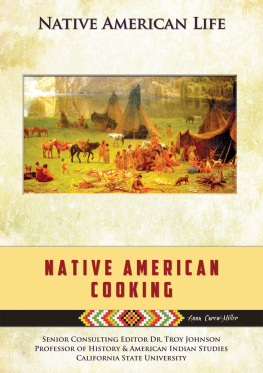Writing acknowledgments gives me an opportunity to thank all of the people who have helped me to write this book. In this case, some of them will never know the debt I owe them. As I have labored with the writing of this book, I have been inspired by the words of so many cooks of the past who have stirred me with their passion for food and cooking. Similarly, the ardent food bloggers of today whose recipes and photographs sometimes cause me to quite literally drool over my computer have also inspired me and sometimes have made me laugh as well as they shared their attempts to create or re-create various dishes.
The idea for this book came from Wendi Schnaufer, my former editor at ABC-CLIO. I hope this final product is something close to what she envisioned. Michael Millman stepped in as editor for this book when Wendi left. He has provided astute commentary and encouragement. Although he probably does not remember, Ken Albala gave me some early support and advice for this project (as well as scaring me and making me wonder, Oh no. What did I get myself into?!) He suggested that I look into joining the Association for the Study of Food and Society. I have been a frequent lurker on that list, and have enjoyed the amazing knowledge and humor of these dedicated food scholars.
Else Hambleton, my dear friend and enthusiastic reader, has as usual given me support and advice. She has read many of the chapters of this book and helped to improve them.
My husband, Douglas Smith, has given me love and companionship. He eats whatever I cook, and if that's not true love, then I don't know what is. Plus, he does the dishes!
Introduction
Cooking is like love. It should be entered into with abandon or not at all.
Harriet Van Horne, Not for Jiffy Cooks, Vogue (1956)
Archaeological evidence indicates that humans were cooking in North America at least 12,000 years ago, perhaps earlier. Because they left no written records, we do not know if they enjoyed cooking or if there were any among them who were particularly skilled cooks. In these hunter-gatherer societies, most likely women did the cooking. We know that 11,500 years ago seminomadic people set up a temporary camp in Alaska, where they caught, cooked, and ate salmon and squirrels. We do not know the fine points of their cooking methods or what they thought as they cooked their meals. Undoubtedly they were content and probably grateful to have food to feed their children, kinspeople, and friends.
WHY COOK?
Although we do not know exactly when humans first cooked, or how or where it happened, most people agree that cooked food tastes good. Humans can taste sweet, sour, bitter, and umami (often described as a rich and satisfying mouthfeel), and over thousands of years, we have learned to catch, grow, produce, and combine ingredients and textures in different ways to make a wide-ranging, perhaps infinite variety of foods. When food is cooked, chemical reactions take place that deepen flavors and change textures: sliced onions cooked slowly in a pan become golden and sweet, meat roasted over a flame or in an oven acquires a crisp brown exterior through the Maillard reaction (discussed in
ORIGINS OF AMERICAN COOKING AND FOODWAYS
The food and food production techniques of mainland American Indians, Caribbean Indians, Europeans, and West Africans intersected in America hundreds of years ago. A partial list of the plants and animals brought to the Americans from Europe, Africa, and Asia includes pigs, cattle, chickens, horses, turnips, yams, onions, lettuce, carrots, celery, wheat, barley, chickpeas, oats, rice, rye, sugarcane, apples, grapes, lemons, peaches, plums, pears, and watermelon. European explorers and settlers also inadvertently brought weeds such as dandelions, rats, earthworms, and diseases, such as smallpox and measles, for which the native population had no immunity. English settlers brought European honeybees along with flowers and other plants they wanted to cultivate in the New World. Without these bees, Georgia peaches and apple orchards throughout the United States would not have been possible.
Food items also traveled from the Americas to Europe, Asia, and Africa, and sometimes back again. Pumpkins, sweet potatoes, vanilla, sweet and hot peppers, beans, corn (maize), wild rice, cranberry, cacao, tomatoes, and tobacco are just a few of the crops that Europeans brought back to Europe, Asia, and Africa. Yet not all of the new items found universal appeal in Europe when they were first introduced. Corn, for example, found favor in Spain and Italy, where it replaced sorghum or millet to produce polenta, but northern Europeans believed corn was good only for feeding to their livestock.
Corn (maize) was one of the most important staples of American Indians.
The processing and grinding of maize is significant. The native inhabitants of the Americas used a process called nixtamalization to prepare maize. As one scholar of ancient cuisines explains, [N]ixtamalization is the complex process that starts with soaking the ripe maize grains and then cooking them with lime or wood ashes. This process removes the outer later on the grain so it is easier to grind. But the major contribution of nixtamalized maize to the unprocessed kind is that it much enhances the protein value of the maize for human beings. Nixtamalization is an ancient technique, and archaeologists have found that it was in use in Guatemala between 1500 and 1200 BCE. Women used special grinding stones called metates and monos to grind grain, beans, and nuts. When Europeans began growing, processing, and eating maize, they did not use nixtamalization, thereby creating nutritional deficiencies among some people who began to rely on the grain.

